One of our favorite tasks when it comes to SCCM management is SCCM Custom Report Creation. Not only does it bring value to an SCCM installation, but it also brings visibility to your hard work toward your management. Without SCCM reports, this huge management tool is running silently on all your devices but you’re not benefiting from all the advantages. It’s like having a sports car and discovering the Autobahn … ok maybe not.
But what makes a good SCCM Custom report?
In our opinion, the default SCCM Reports are lacking many of those points. Yes, they offer valuable data but they are often not adapted to your environment and are visually… basic.
For all those reasons, we started to create our own set of reports and due to their growing popularity, we decided to help you begin your own SCCM report creation process. For this example, we will show the process that we took when designing our free Office 365 report.
SCCM 1606 introduced a new way to inventory Office 365. A new inventory class is created on the client and this data is stored in the v_GS_OFFICE365PROPLUSCONFIGURATIONS. We found this view by browsing the v_GS_* classes in the SCCM database. These classes are usually related to hardware inventory information.
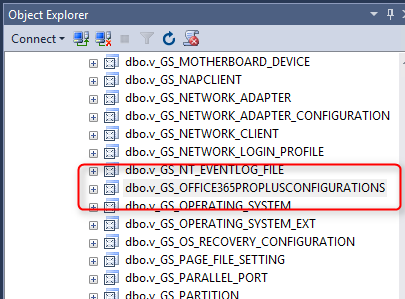
By using a simple query we can see all data stored in this view:
Select * v_GS_OFFICE365PROPLUSCONFIGURATIONS

By looking at the results, we know that this is the right view to use.
The machine name is not included in this view. We need to use a JOIN SQL command to get it from the V_R_System view which is the “main” discovery view containing your clients. An SQL JOIN clause is used to combine rows from two tables, based on a common field between them. In our case (We join V_R_System and v_GS_OFFICE365PROPLUSCONFIGURATIONS based on the same ResourceID)
SELECT * FROM v_GS_OFFICE365PROPLUSCONFIGURATIONS OFI
JOIN v_R_System SYS ON SYS.ResourceID = OFI.ResourceID
After that, we’re adding SYS.Name0 in the SELECT to add the machine name from the V_R_System view and we use a WHERE clause to exclude all NULL records.
SELECT SYS.Name0,* FROM v_GS_OFFICE365PROPLUSCONFIGURATIONS OFI
JOIN v_R_System SYS ON SYS.ResourceID = OFI.ResourceID
WHERE CDNBaseUrl0 is not null
We end up with something like this :

You can modify the query to exclude unwanted data. Once your query is created, we can create the report.
To create SCCM custom report, follow these steps :
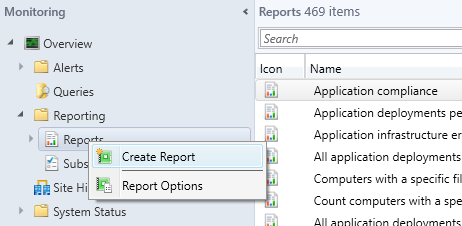
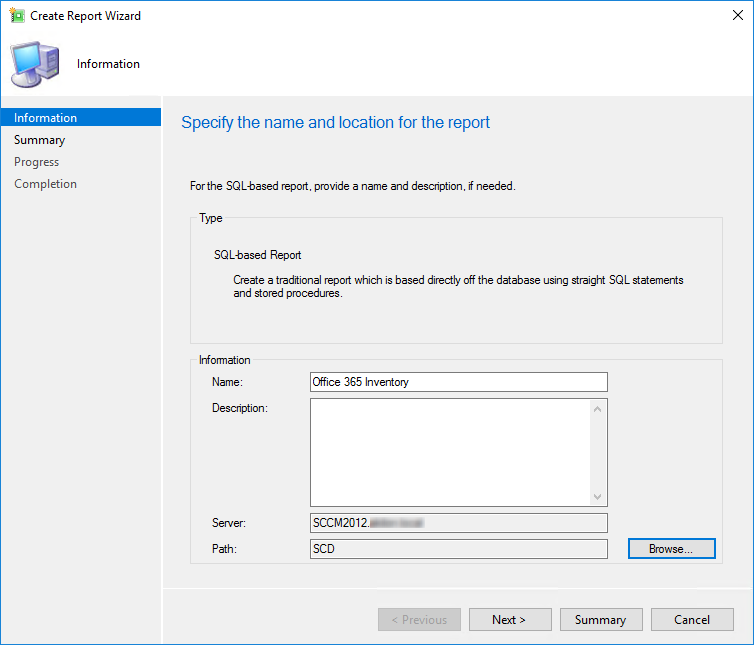
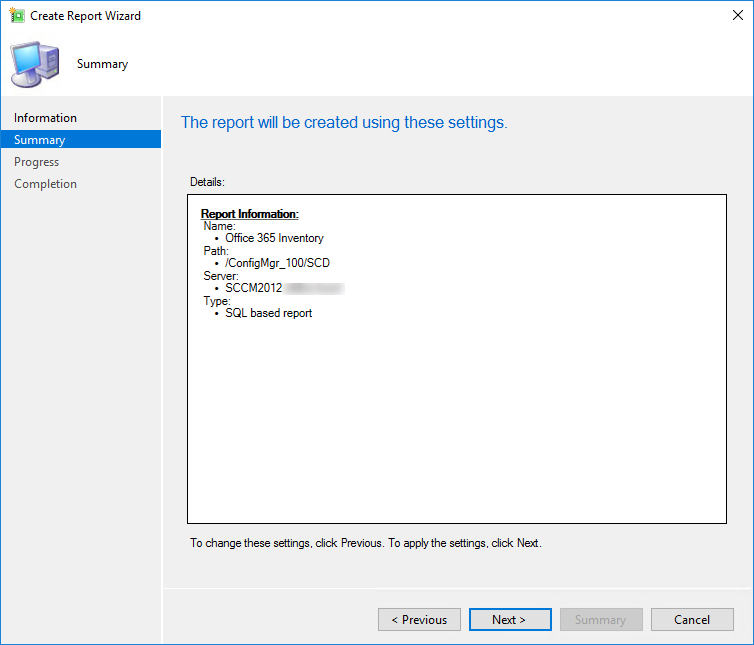
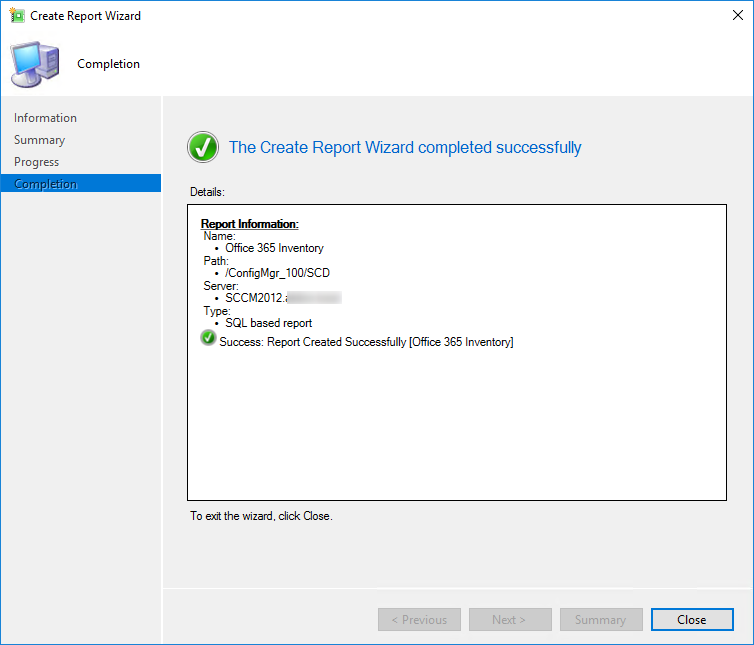
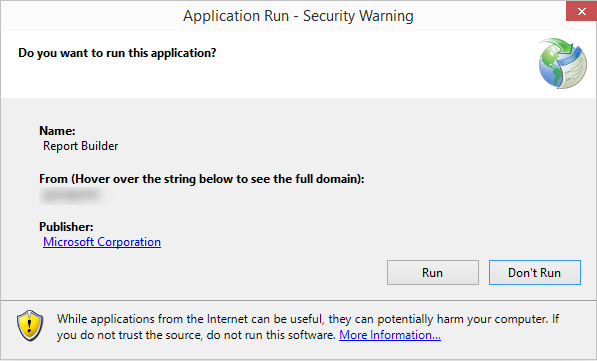
Report Builder is a simple tool to create reports. You can also use Visual Studio but you need a license, so we’ll stick to Report Builder. We will explain the basic steps for creating a report.
Once Report Builder is launched, look at the left part of the screen, we will focus on the Report Data section.
Data Sources and Datasets folder is the most important to start. The Data Source section will be used to configure the database and Dataset will be used for the SQL query.

In our case, we won’t use Built-in Fields and Parameters but they are very useful when you want to standardize your reports. For example, if you want to scope a report to a specific collection, you will need to use the Parameters section. If you want to include your company logo in the report, you will need to import it into the Images folder.
We first need to connect to the SCCM database :
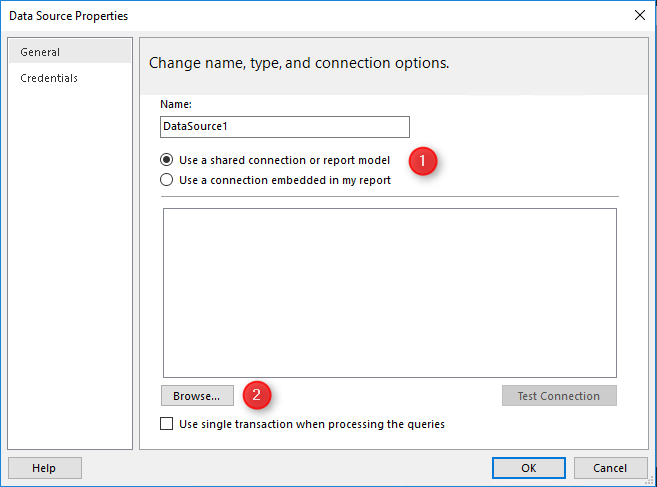
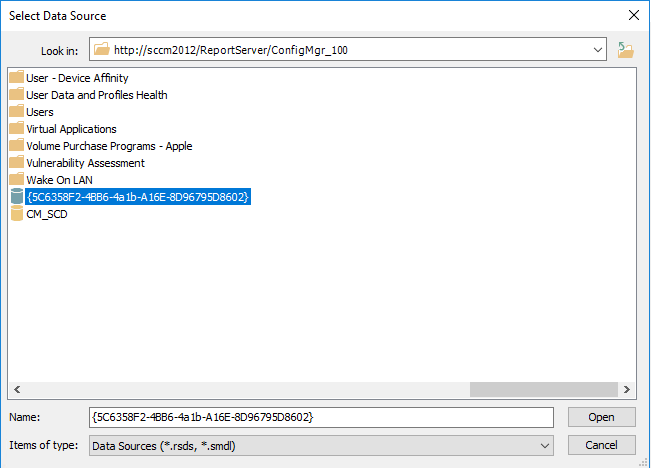
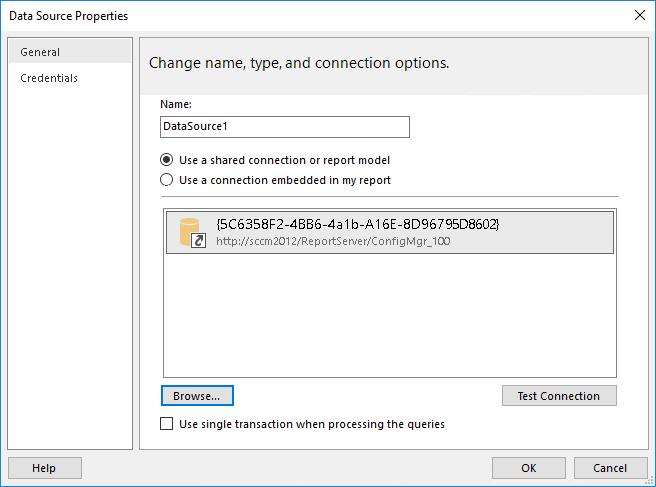
Make sure that your account has access to the database. If not, set up another account via Credentials on the left panel.
The Datasets section is where your SQL query will be created.

SELECT SYS.Name0,* FROM v_GS_OFFICE365PROPLUSCONFIGURATIONS OFI
JOIN v_R_System SYS ON SYS.ResourceID = OFI.ResourceID
WHERE CDNBaseUrl0 is not null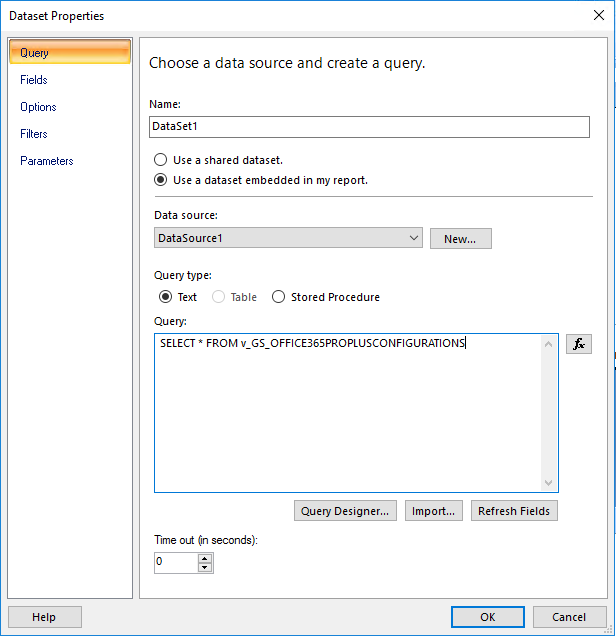
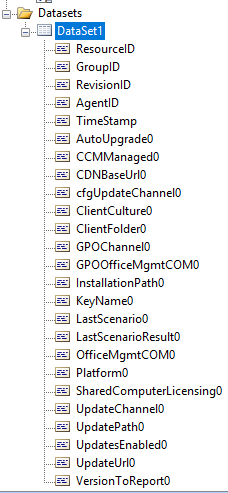
We are now ready to create the visual side of the report. We will include the data returned by the query.
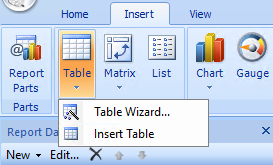
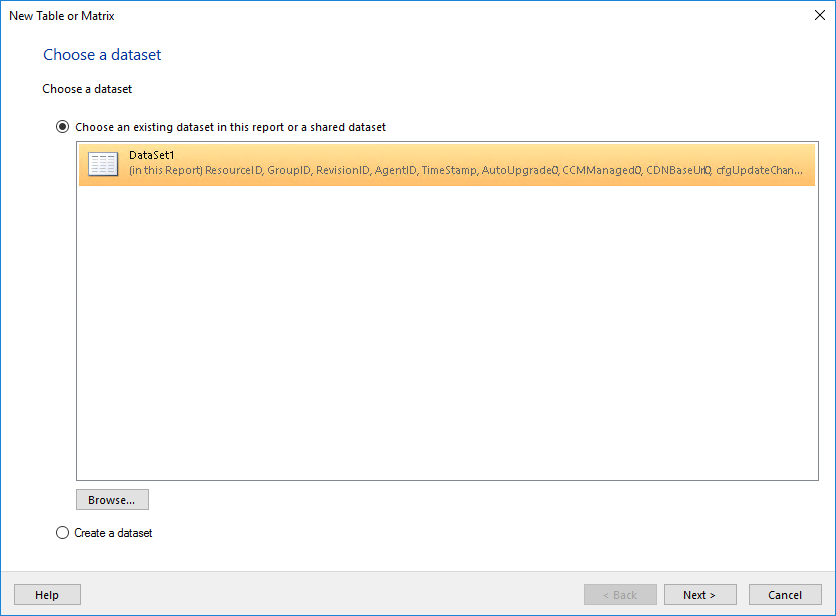
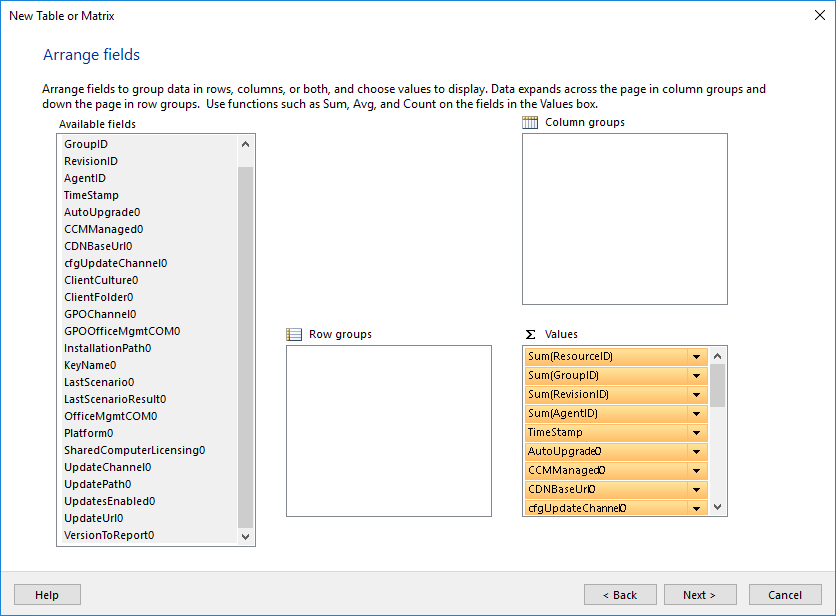
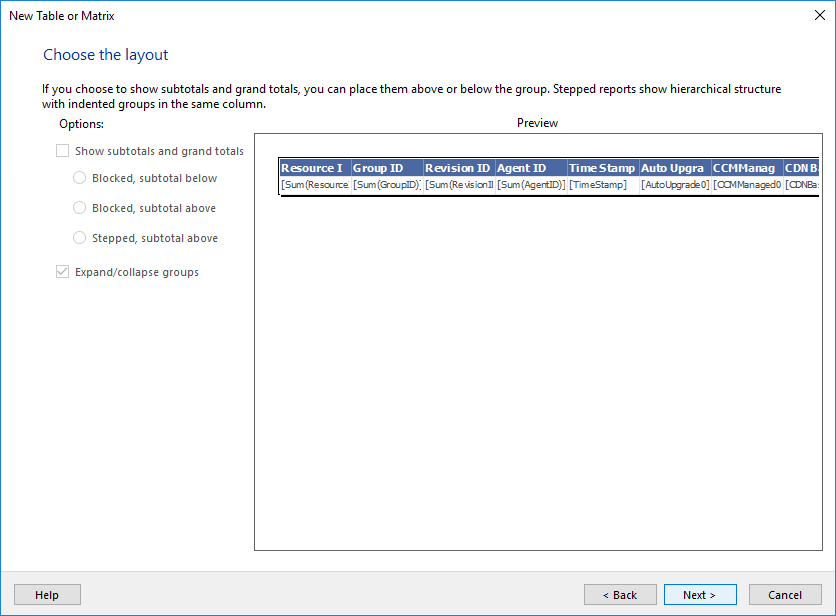
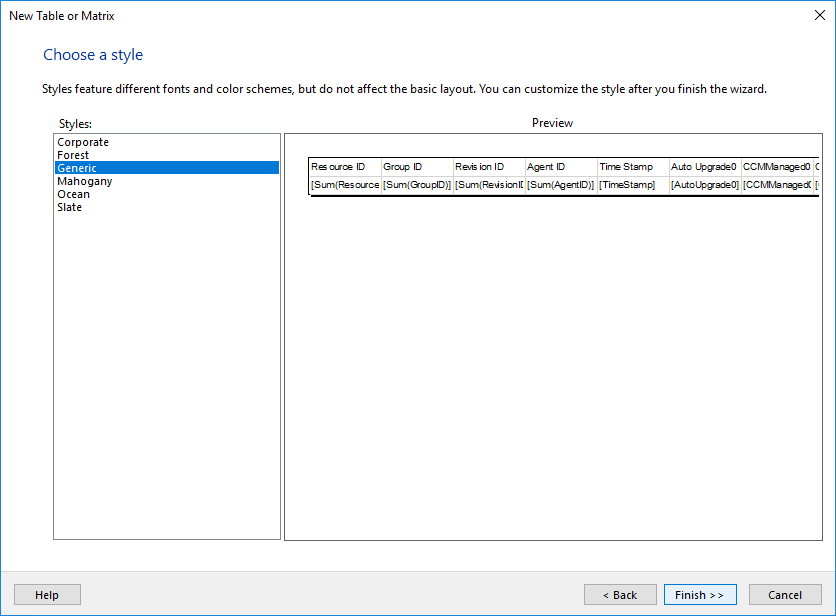
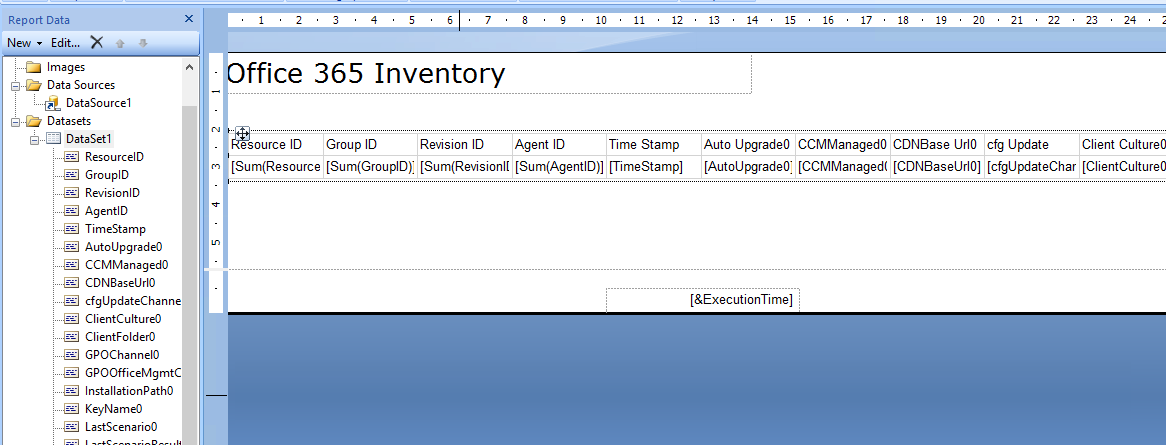
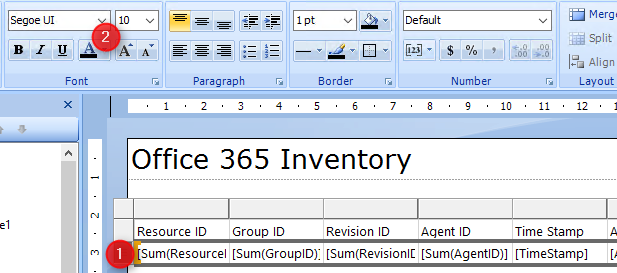

Once imported, drag the Image to your report, click OK on the Image Properties box
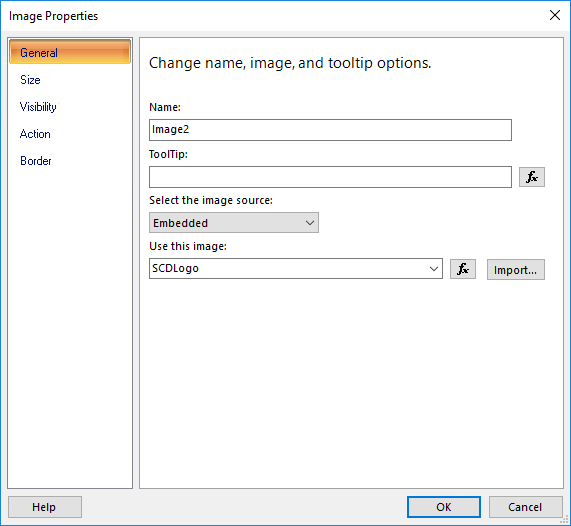

After all modifications, our final report looks like this :
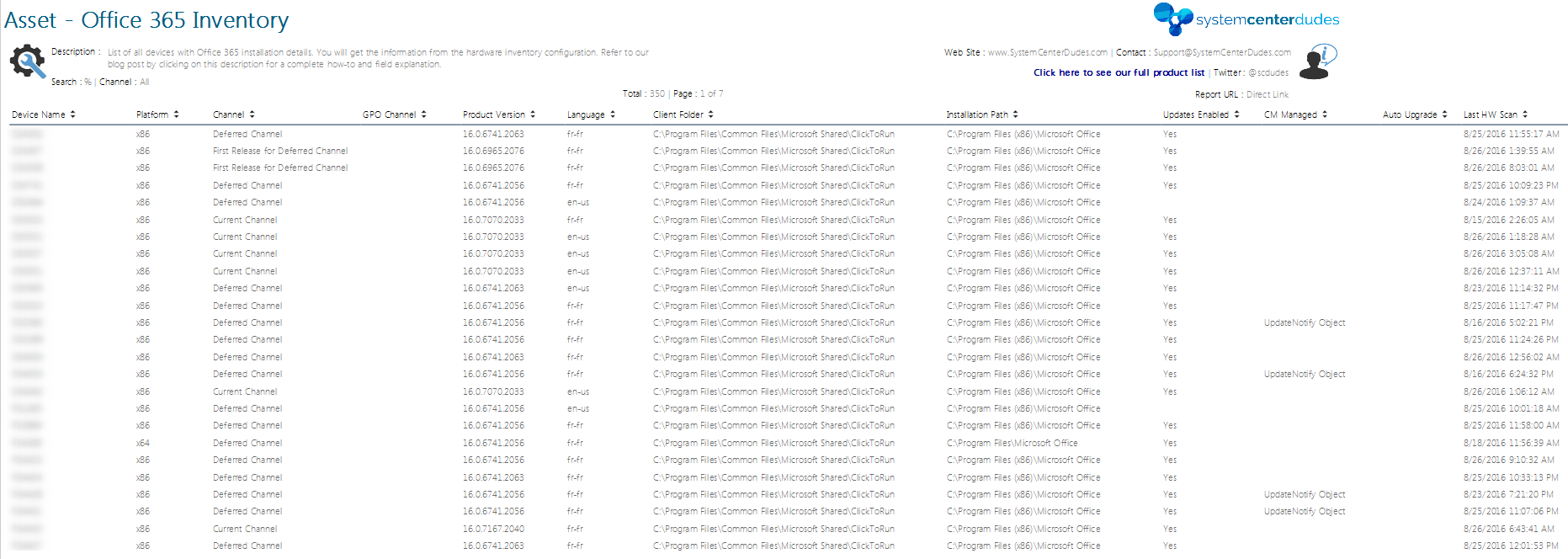
When we’re done with the design, we will test the result in Report Builder before saving it to our production folder.

Go back and modify if needed, when you’re satisfied with the results, click Save button on the top left. The report is automatically available on your reporting point in the folder you specified.
By saving the report in Report Builder, your report will be updated in SSRS and in the SCCM console.
SSRS
 Console
Console

Your first SCCM Custom Report Creation might not be the best one but with perseverance, you’ll get better and develop your skills. If you’re too lazy or don’t have time for this, we can help at a very low cost. (and many custom reports are free)

Please fill out the form, and one of our representatives will contact you in Less Than 24 Hours. We are open from Monday to Friday.



Thank you for subscribing to our newsletter or requesting a quote. You will receive our next month's newsletter. If you have requested a quote, we will get in touch with you as soon as possible.


Something went wrong!
Thank for your reply!